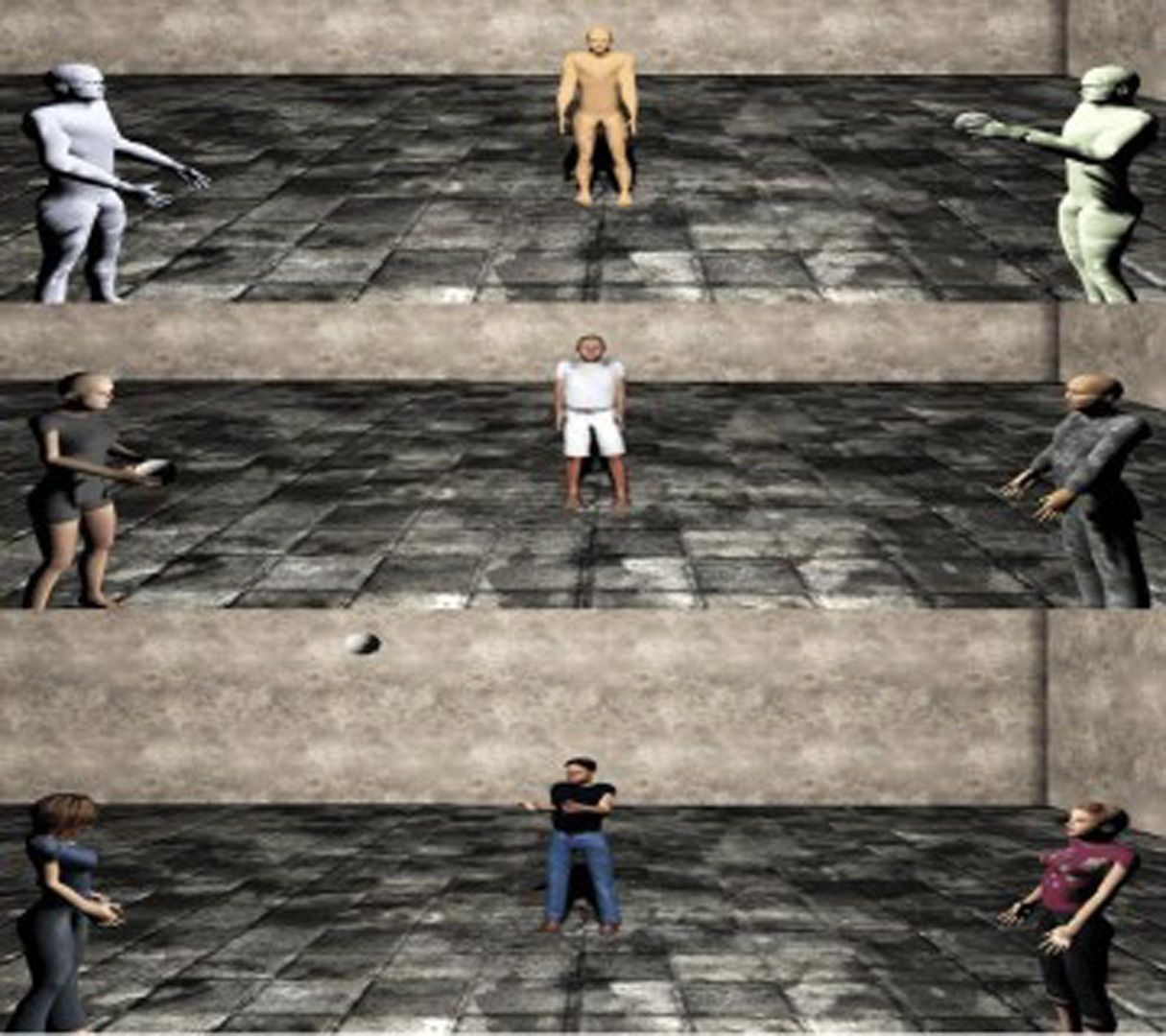“Cyberball3D+ for fMRI: Implementing Neuroscientific Gaming” by Mavromihelaki, Eccles, Harrison, Critchley and Mania
Conference:
Type(s):
Entry Number: 32
Title:
- Cyberball3D+ for fMRI: Implementing Neuroscientific Gaming
Presenter(s)/Author(s):
Abstract:
This research presents an innovative real-time, interactive gaming system called Cyberball3D+ incorporating virtual characters, to be played interactively in Functional Magnetic Resonance Imaging (fMRI) for the study of empathy, social exclusion and ostracism. For the first time, neuroscientific correlates of believability and emotional engagement with synthetic characters are acquired. Such output is non-obtrusive derived at the same time as the experience occurs. 3D characters are used in films and games but it is still undetermined how design, stylization and behavioral factors interweave to make a character believable. When using synthetic characters in neuroscientific experiments, the aim is that people emotionally respond to them in a similar manner to humans. Although research has shown that users show empathy for 3D characters, it is challenging to identify at which level of anthropomorphism such emotional experiences occur. Anthropomorphism refers to the attribution of a human form and behavior to non-human entities such as robots, animals, etc. However, uncanny valley effects – ie negative dips in user impressions – can arise: behavioural fidelity expectations increase alongside increases in visual fidelity and vice versa. Previous research into evaluating whether virtual characters fulfill their role acquired ratings of pleasantness through subjective self-report (McDonnell et al. 2012). The aim of this work was threefold: To create a 3D interactive gaming paradigm based on the original Cyberball for the secluded space of an fMRI scanner; To study whether the emotional response of inclusion and exclusion of self and other will be modulated by the level of anthropomorphism of the players, establishing neuroscientific believability metrics; to investigate whether exclusion of others will activate similar networks (social pain matrix) to watching exclusion of self, therefore, eliciting empathy and social pain.
References:
- McDonnell, R., Breidt, M., and Bülthoff, H. H. 2012. Render me real?: investigating the effect of render style on the perception of animated virtual humans. ACM Transactions on Graphics (TOG) 31, 4, 91.
- Meyer, M. L., Masten, C. L., Ma, Y., Wang, C., Shi, Z., Eisenberger, N. I., and Han, S. 2013. Empathy for the social suffering of friends and strangers recruits distinct patterns of brain activation. Social cognitive and affective neuroscience 8, 4, 446–454.




